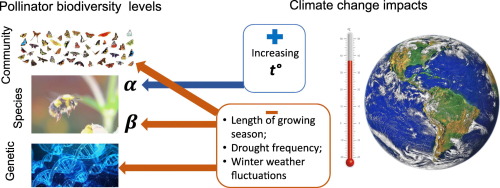
### Wild Bees in Peril: The Unequal Effects of Climate Change Compared to Habitat Disruption
Wild bees, essential players in global ecosystems and food security, are facing increasing dangers — not only from habitat degradation, but more critically from the intensifying ramifications of climate change. A pioneering study conducted by researchers at Penn State reveals that it’s climate — rather than just land use or alterations in the landscape — that presents the most severe threats to wild bee numbers. This finding highlights the pressing need for a comprehensive strategy to safeguard these crucial pollinators.
#### Climate Change as the Foremost Pressure
The investigation, spearheaded by Dr. Christina Grozinger, a Distinguished Professor of Entomology at Penn State and director of the Center for Pollinator Research, identified a clear and significant correlation between climate factors and the abundance and diversity of wild bees. Critical weather phenomena, such as rising winter temperatures, changing precipitation patterns, extended hot summers, and lengthened growing seasons, were closely linked to the decrease in wild bee populations across the Northeastern United States.
“Our research indicated that the primary factor affecting wild bee abundance and species variety was the weather, specifically temperature and rainfall,” Grozinger stated. Emerging patterns like milder winters, increased rainfall during the colder months, and extended summer heat waves have likely intensified the issues confronting wild bees. With one of the most extensive long-term data collections to date, the study emphasizes the alarming sensitivity of wild bee populations to changing climatic conditions.
#### A Combined Challenge: Climate Change and Habitat Deprivation
Historically, habitat loss has been acknowledged as a major factor in the decline of pollinators. However, the research team, which includes graduate student Melanie Kammerer, discovered that climate change surpassed habitat degradation in terms of its impact on bee populations. “We believed this was a missed observation because, like numerous species, bees are undergoing both habitat loss and climate change concurrently,” Kammerer noted.
By integrating climate information and land-use assessments, the researchers were able to evaluate the comparative effects of these stressors. The results indicated that while habitat and resources remain essential for pollinator health, weather phenomena such as temperature extremes and rainfall variability exert a greater influence on wild bee abundance and species diversity.
#### The Specific Effects of Climate Factors on Bees
By utilizing land cover maps, climate models, and sophisticated machine-learning analyses, the researchers revealed intricacies in how weather impacts different bee species. For instance, spring bees tended to have difficulties in wetter conditions due to excessive rainfall impeding their foraging capabilities—crucial during their reproductive period. Likewise, warmer winters correlated with increased mortality rates among bees during hibernation, likely due to heightened activity that drains their energy before they can reach adequate food sources.
Hot summers and extended drought-like scenarios also disrupted flower supply, decreasing the availability of nectar and pollen, both vital for sustenance. These same factors could have cascading effects in subsequent years, as bees facing food shortages are less likely to thrive or reproduce.
“We’re only starting to grasp the various ways climate affects bees,” Grozinger remarked, stressing the importance of long-term and extensive studies to expand upon these insights.
#### Preparing for an Unfavorable Future Climate
As the ramifications of climate change escalate, the challenges faced by wild bee populations are expected to worsen. “In the years to come, warm winters and lengthy, hot summers are predicted to become more common, which we anticipate will pose significant challenges to wild bee populations,” Kammerer mentioned. Indeed, earlier springs caused by rising temperatures could disrupt bee life cycles, resulting in mismatched timings for activity and resource availability.
To tackle these issues, the researchers emphasize the necessity of examining how various, interconnected pressures — such as severe weather events, habitat loss, and pesticide exposure — exacerbate the risks for wild bees. Without addressing the combined impacts of these threats, any conservation initiative may prove incomplete or inadequate.
#### Conservation Through Investigation and Community Engagement
This research is part of the **Beescape project**, an initiative led by Penn State aimed at assisting growers, conservationists, and backyard gardeners in evaluating and enhancing habitat conditions for wild bees. Beescape currently prioritizes landscape quality, but the team intends to integrate weather and climate information to provide more actionable insights to stakeholders.
Broadening the application of such tools is essential as wild bees fulfill a critical role in not only pollinating wild flora but also bolstering agriculture, particularly through the pollination of fruits, vegetables, and nuts. Protecting them necessitates addressing both local and global pressures, from habitat restoration to reducing greenhouse gas emissions.
#### The Path Forward: Tailoring Conservation to a Shifting Climate
This Penn State-led study serves as a sobering reminder of the complex hurdles pollinators encounter in today’s world. Focusing solely on land-use practices or creating pollinator-friendly gardens is insufficient; climate adaptation strategies must be integrated into conservation efforts. Recognizing the interconnected threats of